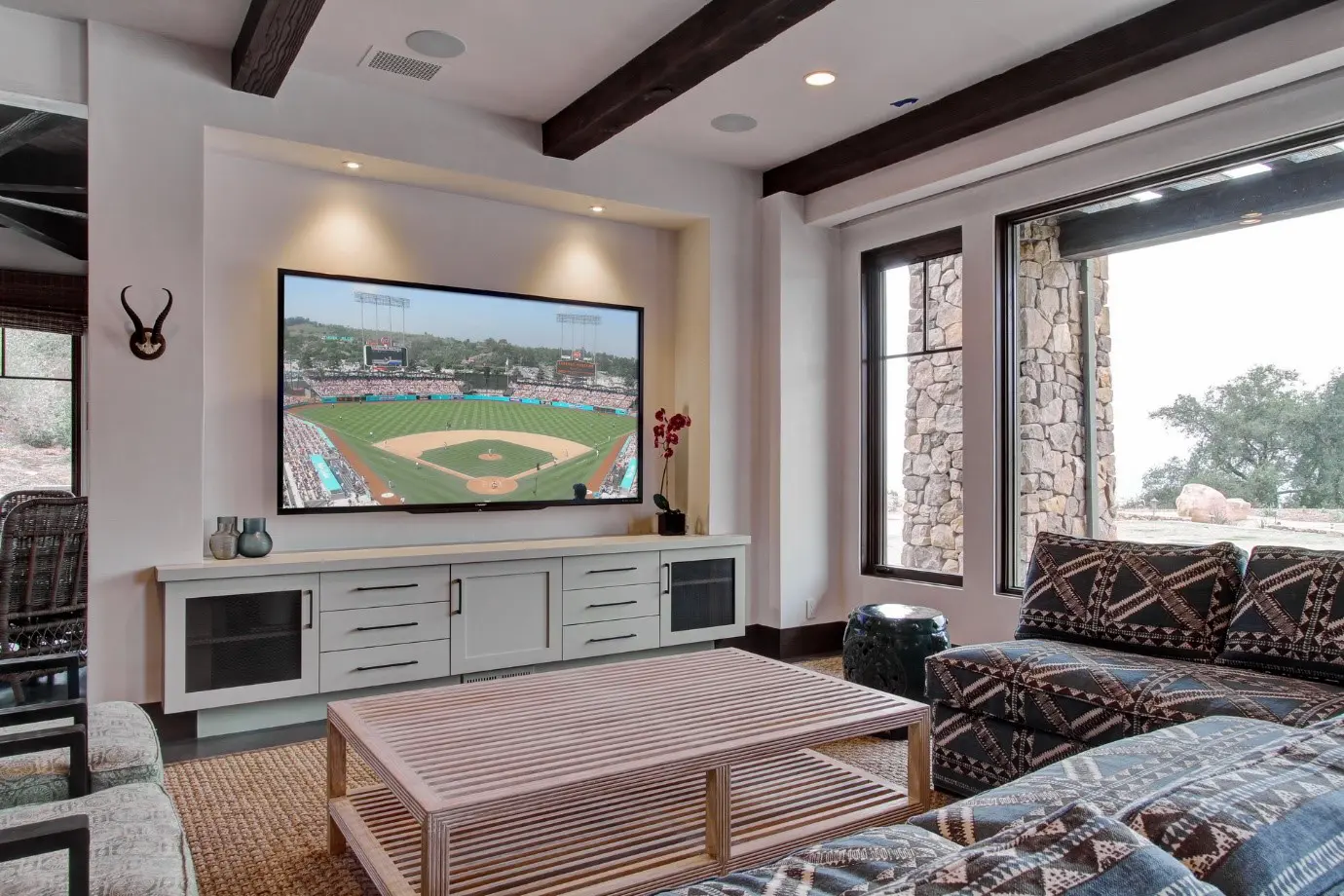| موارد اصلی در رسانهای یا سینمای خانگی | توضیحات |
| تعریف اتاق رسانهای | اتاق چندمنظورهای برای تجربه رسانهای |
| ویژگیهای اتاق رسانهای | طراحی برای تعامل اجتماعی، چیدمان انعطافپذیر، انتخاب مناسب اندازه صفحهنمایش |
| صدا | سیستم صوتی بهینه با اسپیکرهای پنهان و مدیریت مرکزی صدا |
| مقایسه با سینمای خانگی | اتاق رسانهای چندمنظوره و مناسب برای تعامل اجتماعی؛ سینمای خانگی برای تجربهی غوطهوری کامل |
| کاربران اصلی | اتاق رسانهای برای خانواده و مهمانان؛ سینمای خانگی برای علاقهمندان به فیلم و موسیقی |
| مقصود استفاده | اتاق رسانهای برای مهمانی و تماشای فیلم؛ سینمای خانگی برای تجربهی سینمایی کامل |
A media room is best described as a multi-use space centered around a media experience. It’s a fairly generic term describing a room where people might do anything from watching television to playing video games.
This type of room is designed to be relaxing and multifunctional. It’s more akin to a simple living room than to a home theater. Media rooms have a few key features that distinguish them from other types of rooms.
Socializing
Media rooms are designed to promote socializing. Much like a traditional living room, it promotes conversation and inclusion. For this reason, media rooms are great for watching sports games, listening to music, or spending time with neighbors, family, and friends. In contrast, the home theater is designed to be an immersive media experience with a more formal design.
Seating
Seating is a key consideration in the design of your media room. Furniture arrangements are intended to increase conversation and interaction. However, the key to a successful design is the capacity for flexibility. Media room furniture usually includes a variety of comfy couches, chairs, and ottomans that make it feel like a living room. Nonetheless, a good design is easily rearranged so that when the game starts, everyone can see the screen. On the other hand, the home theater uses seating arranged in rows where each person has their own chair.
Screen
Screens are arguably the most important aspect of any media experience. Your screen needs to be a perfect size. If it’s too big it might overwhelm the ability for you to socialize. If it’s too small, it might be difficult to see. Your ideal screen size is heavily reliant on the room size, seating distances, ambient light levels, and the projector itself, so call an expert for a recommendation.
Sound
The media room is unique because it aims for the sweet spot between a run-of-the-mill living room and an epic home theater. The goal to be “just right” rings true in regards to sound quality and design as well. You want to be able to hear the game and your friends at the same time. To achieve this goal, it’s important that your sound system is properly designed and calibrated. The best media rooms boast hidden speakers without exposed wiring and a central system for volume management.
Media Room vs. Home Theater: Which one do you need
While there is a lot of cross-over between a media room and a home theater, there are key differences to consider. Ask yourself these two questions.
Who Will Use It Most?
It’s important to think about who will use the room most often. Media rooms are great when hosting guests and for your kids and grandkids. However, home theaters are better for movie and music aficionados, married couples, or retirees.
When thinking about who will use your upgraded room, also consider what they like to watch.
- Cable television? Media room.
- Watching your favorite streaming service? Home theater.
- Gaming? Media Room.
- Movie watching? Home theater.
What Will It Be Used For?
Media rooms are used as a multipurpose space where you can listen to music, host a party, or watch a weeknight movie with your family. In contrast, home theaters are designed for a completely immersive experience.
Oftentimes, home theaters are soundproof with strategically low light. Home theaters need bigger screens that mimic a movie theater and elevated sound systems that blow you out of the water at max volume. We offer a variety of options for complete Home Theater design and installation, including in-depth acoustical analysis, room isolation, and performance-enhancing treatment, while making everything simple to use.
If you’re hoping to bring the full movie theater experience to you, a home theater is the right choice. Conversely, if you’re looking to host a viewing party or want to be able to multitask while watching, a media room is best.
Whether you decide a home theater or media room would be best for your Home, CODALI is ready to help from design to installation. Call us today at ……………..


